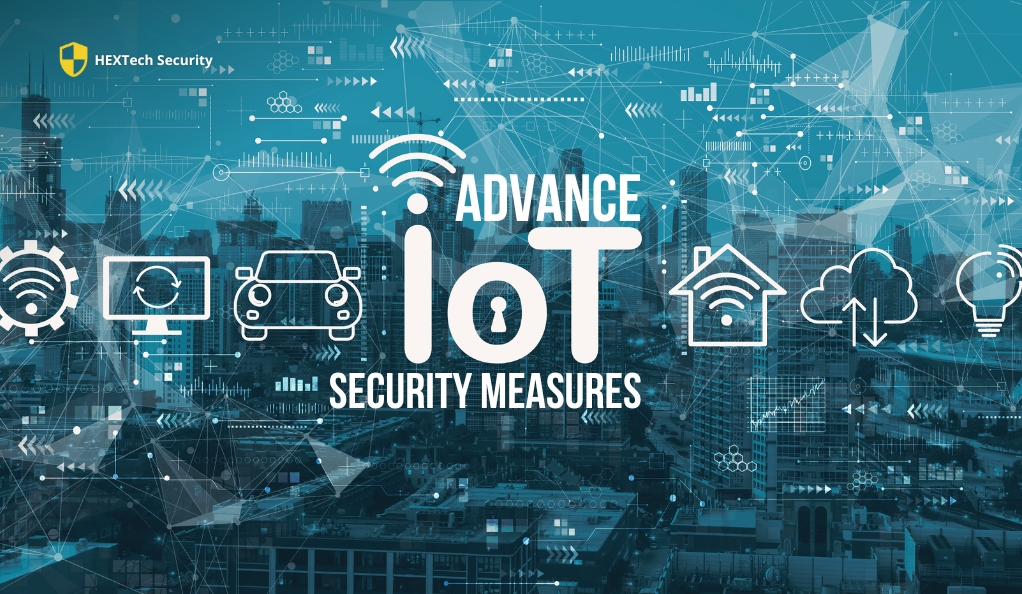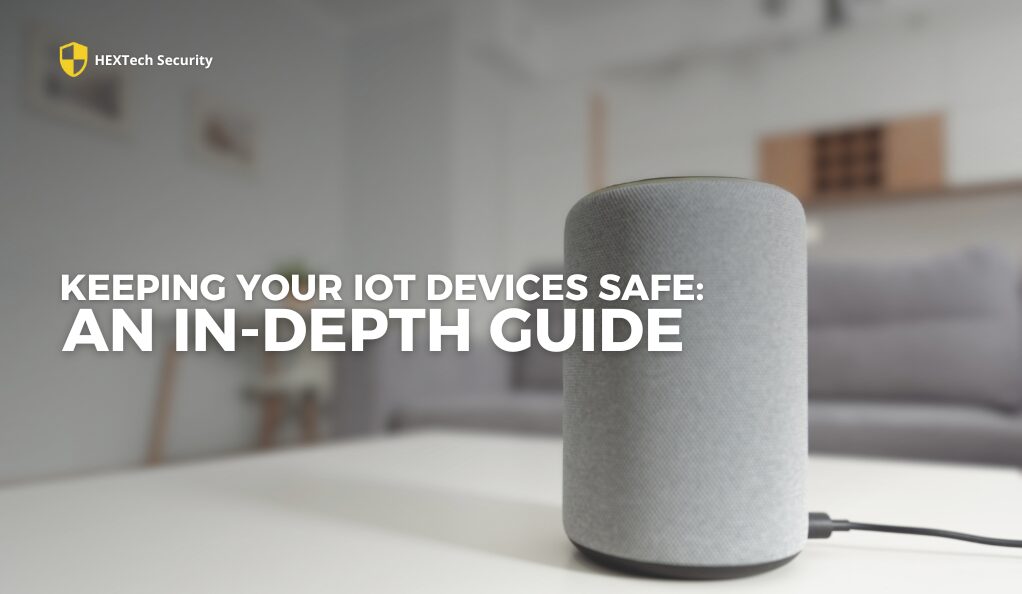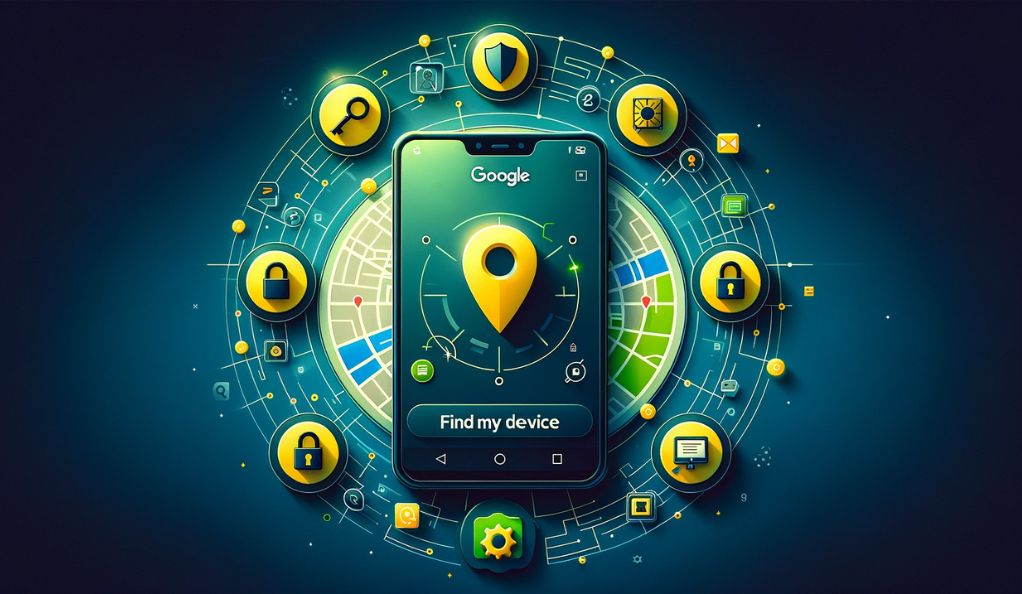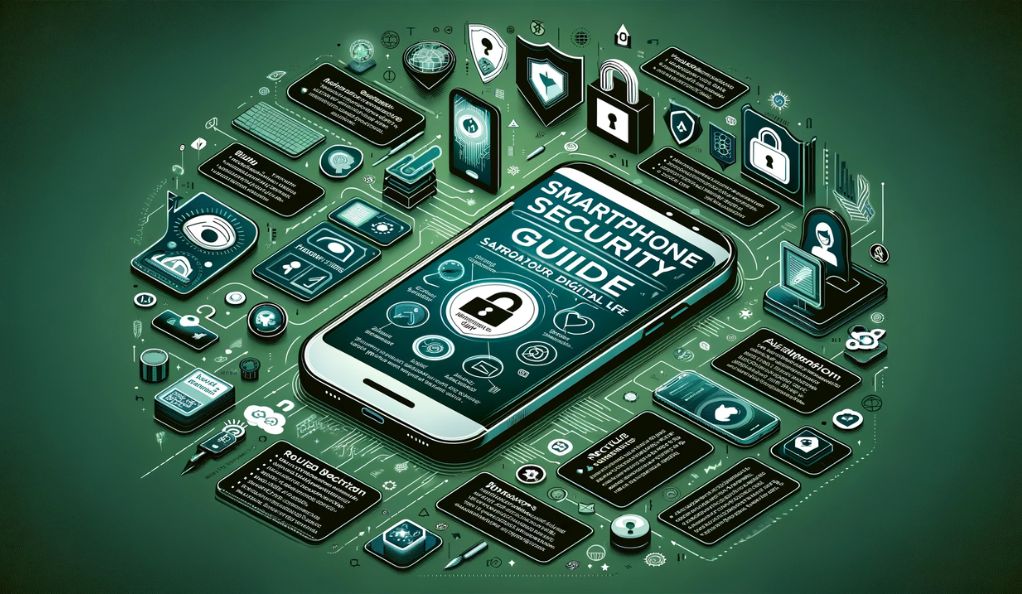In an era where the Internet of Things (IoT) is becoming increasingly integral to our daily lives, the security of these devices is more important than ever. With billions of IoT devices in use worldwide, they present a significant target for cyber threats. This guide delves into the essentials of IoT security, offering practical steps to protect your devices.
Understanding IoT Security
In the rapidly expanding world of the Internet of Things (IoT), understanding the nuances of IoT security is not just a necessity; it’s imperative for the protection of our digital ecosystem. IoT devices, which range from everyday household items like smart thermostats and refrigerators to sophisticated industrial tools, are increasingly becoming an integral part of our lives. However, their convenience comes with a caveat: they can be vulnerable to a myriad of security threats.
The Essence of IoT Security
IoT security is the practice of safeguarding connected devices and the networks they operate in from malicious attacks. Unlike traditional cybersecurity, which focuses primarily on protecting data and systems, IoT security must also consider the physical functionality and safety of devices. This is because many IoT devices interact with the physical world in ways that conventional IT devices do not.
Why is IoT Security Critical?
The criticality of IoT security stems from several factors:
- Scale and Scope of IoT: With billions of devices connected globally, the IoT landscape presents a vast attack surface. Each device, from a simple sensor to a complex smart home system, could potentially be a gateway for cyber attackers.
- Data Sensitivity: IoT devices often collect and transmit sensitive data, including personal information, which can be a goldmine for cybercriminals. The protection of this data is crucial in maintaining privacy and trust.
- Complex Ecosystems: IoT environments are often complex, with devices from multiple manufacturers and systems that need to interact seamlessly. This complexity can create security gaps that are hard to identify and fix.
- Physical and Digital Risks: Compromised IoT devices can lead to more than just data breaches; they can cause physical harm. For instance, a hacked smart car or medical device can have life-threatening implications.
Common Vulnerabilities in IoT Devices
IoT devices often have inherent vulnerabilities that can be exploited by cyber attackers. These include:
- Insecure Interfaces: Many IoT devices are accessed through web or mobile interfaces that may lack adequate security measures.
- Lack of Regular Updates: Some IoT devices do not receive regular firmware updates, leaving known vulnerabilities unpatched.
- Weak Authentication and Authorization Protocols: Devices that do not require strong passwords or other authentication methods are particularly vulnerable.
- Unencrypted Data: Data that is not encrypted, both at rest and in transit, can be easily intercepted and misused.
The Way Forward
Understanding IoT security is the first step in a journey towards a safer digital future. As we integrate more devices into our lives, it becomes essential to be aware of the security risks and how to mitigate them. This involves not only adopting best practices but also advocating for higher security standards from manufacturers and developers. By doing so, we can harness the full potential of IoT technology without compromising our safety and privacy.
IoT Device Security Concepts
In the realm of IoT (Internet of Things) security, grasping the fundamental concepts is crucial for effectively safeguarding these devices. This section delves into the key security concepts that are essential for protecting IoT devices, offering insights into their practical applications and significance.
Fundamental Concepts in IoT Security

- Encryption: At the heart of IoT security is encryption, a process that transforms data into a coded format to prevent unauthorized access. Encryption is vital for IoT devices as it ensures that data, whether at rest (stored data) or in transit (data being transmitted), remains secure and unreadable to unauthorized parties. For instance, when a smart home device sends data to the cloud, encryption ensures that this sensitive information remains confidential and tamper-proof.
- Authentication: Authentication in IoT is the process of verifying the identity of a device or a user. It’s a critical security measure to ensure that only authorized devices and users can access and interact with the IoT ecosystem. This can involve methods like passwords, digital certificates, or biometric verification. For example, a smart door lock might use authentication to verify whether the person trying to access it is the homeowner.
- Authorization: Closely linked with authentication, authorization is the process of granting or denying rights to a user or device to access certain data or functionalities. In IoT, this means controlling which devices or users can perform certain actions or access specific data. For example, in a smart office setup, employees might have different authorization levels, with only certain individuals able to access confidential data.
- Integrity: This concept refers to ensuring that data is accurate and unaltered during transmission or storage. Integrity checks are crucial in IoT environments to prevent data tampering or corruption. This can be achieved through checksums or cryptographic hashes, ensuring that the data received is exactly what was sent.
- Secure Boot and Firmware Updates: Secure boot ensures that IoT devices only load and execute software that is authenticated and untampered with. Regular firmware updates are also crucial for IoT security, as they can patch vulnerabilities and enhance the device’s security features.
Practical Implementation of IoT Security Concepts
In real-life scenarios, these security principles are utilized in diverse manners across a range of IoT devices. Take, for example, a smart thermostat, which implements encryption to safeguard user-specific information such as temperature preferences and home occupancy timings. Similarly, in smart security systems, mechanisms of authentication and authorization are crucial, as they control access to surveillance data, ensuring it’s available exclusively to users who have been granted permission.
The Importance of a Holistic Approach
Understanding and implementing these security concepts is not just a technical challenge but also requires a holistic approach. This involves considering the entire lifecycle of an IoT device, from design and development to deployment and maintenance. Manufacturers and users alike must prioritize these security concepts to ensure the resilience and reliability of IoT devices against evolving cyber threats.
Step-by-Step Guide to Securing Your IoT Devices
In the dynamic landscape of IoT (Internet of Things), securing your devices is not just a one-time task but a continuous process. This step-by-step guide is designed to help you fortify your IoT devices against potential threats, ensuring a secure and reliable digital environment.
Step 1: Regular Firmware Updates
Why It’s Important: Firmware updates often contain critical security patches that address newly discovered vulnerabilities. Keeping your IoT devices updated is a fundamental step in protecting them from cyber threats.
How to Implement:
- Check for Updates Regularly: Frequently check the manufacturer’s website or the device’s app for firmware updates.
- Enable Automatic Updates: If available, enable automatic updates to ensure your device always runs the latest firmware.
- Verify Update Sources: Ensure that updates come from legitimate sources to avoid installing malicious software.
Step 2: Secure Network Practices
Why It’s Important: A secure network acts as the first line of defense, preventing unauthorized access to your IoT devices.
How to Implement:
- Strong Wi-Fi Passwords: Use complex and unique passwords for your Wi-Fi networks.
- Network Segmentation: Consider creating a separate network for your IoT devices. This limits the potential impact if one device is compromised.
- Use a VPN for Remote Access: When accessing your IoT devices remotely, use a Virtual Private Network (VPN) to encrypt the data transmission.
Step 3: Strong Authentication Methods
Why It’s Important: Strong authentication methods prevent unauthorized access to your IoT devices, adding an extra layer of security.
How to Implement:
- Unique Passwords for Each Device: Avoid using default passwords. Set a unique, strong password for each IoT device.
- Two-Factor Authentication (2FA): Where available, enable 2FA. This could include a code sent to your phone or email, adding an additional security layer.
- Regularly Update Passwords: Change passwords periodically and whenever you suspect a potential security breach.
Step 4: Monitor and Audit IoT Devices
Why It’s Important: Regular monitoring and auditing help in early detection of any unusual activities or potential breaches.
How to Implement:
- Regularly Check Device Logs: Review the logs to identify any abnormal activities or access attempts.
- Use Security Software: Employ IoT security solutions that can monitor network traffic and alert you to suspicious activities.
- Conduct Regular Audits: Periodically assess your IoT security measures and update them as needed.
Step 5: Educate Yourself and Others
Why It’s Important: Understanding the evolving nature of IoT threats is crucial in maintaining effective security practices.
How to Implement:
- Stay Informed: Keep up with the latest IoT security trends and threats.
- Attend Workshops or Webinars: Participate in educational events focused on IoT security.
- Share Knowledge: Educate family members or colleagues about the importance of IoT security and best practices.
Security for Remote Access of IoT Devices
In today’s interconnected world, remote access to IoT (Internet of Things) devices has become a norm, but it also opens up new avenues for potential security breaches. This section focuses on best practices for securely accessing IoT devices remotely, ensuring that convenience does not compromise security.
Understanding the Risks of Remote Access

Remote access allows users to control and monitor IoT devices from any location, which, while convenient, can expose devices to cyber threats like hacking and unauthorized access. The risks are compounded when using unsecured networks or weak authentication methods.
Implementing Secure Remote Access
- Use Strong Authentication: Ensure that any remote access to your IoT devices requires strong authentication. This might include complex passwords, biometrics, or multi-factor authentication (MFA). MFA, in particular, adds an additional layer of security by requiring a second form of verification, such as a code sent to a mobile device.
- Employ Virtual Private Networks (VPNs): A VPN creates a secure, encrypted tunnel for data transmission between your device and the IoT device. This is especially important when accessing your IoT devices over public or unsecured Wi-Fi networks, as it protects your data from being intercepted.
- Regularly Update Security Protocols: Cyber threats are constantly evolving, and so should your security measures. Regularly update your VPN and other security software to ensure they are equipped with the latest protections.
- Monitor Access Logs: Keep an eye on access logs for any unusual or unauthorized access attempts. Many IoT devices provide logs that show when and how the device was accessed, which can be crucial for identifying potential security breaches.
- Secure Wi-Fi Networks: If you’re accessing IoT devices within a Wi-Fi network, ensure the network is secure. Use strong, unique passwords and consider using Wi-Fi Protected Access 3 (WPA3), the latest security protocol for Wi-Fi networks.
- Educate Users: If multiple users have remote access to the IoT devices, ensure they are all aware of the best practices for security. This includes using strong passwords, recognizing phishing attempts, and understanding the importance of secure networks.
The Role of Manufacturers and Developers
While users play a crucial role in securing remote access, manufacturers and developers of IoT devices also have a responsibility. They should provide regular firmware updates to address security vulnerabilities, offer robust built-in security features, and ensure that their devices are compatible with standard security protocols.
Securing remote access to IoT devices is a shared responsibility between users, manufacturers, and developers. By implementing strong authentication methods, using VPNs, regularly updating security protocols, and staying vigilant about access logs and network security, users can significantly enhance the security of their IoT devices when accessing them remotely.
Navigating IoT Security Challenges
As the Internet of Things (IoT) continues to expand, navigating the myriad of security challenges becomes increasingly complex. This section explores the evolving landscape of IoT security challenges and offers strategies for effectively managing these risks.
Understanding the Evolving Threat Landscape
The IoT ecosystem is dynamic, with new devices continually being introduced and existing ones regularly updated. This constant evolution, while beneficial in terms of functionality and convenience, also brings new security vulnerabilities and challenges:
- Diverse and Expanding Attack Surface: The sheer variety and number of IoT devices, each with its own set of vulnerabilities, create a broad attack surface that is difficult to secure comprehensively.
- Complexity of IoT Networks: IoT networks often involve multiple interconnected devices from different manufacturers, complicating the implementation of uniform security measures.
- Emerging Threats: As IoT technology advances, so do the tactics of cybercriminals. New types of attacks are constantly being developed, targeting the unique vulnerabilities of IoT devices.
Strategies for Addressing IoT Security Challenges
- Stay Informed About New Threats: Regularly update your knowledge about emerging IoT security threats. This can involve subscribing to cybersecurity newsletters, attending relevant webinars, or participating in IoT security forums.
- Implement Layered Security Measures: Adopt a multi-layered security approach. This includes not just securing the IoT devices themselves but also the networks they operate on and the data they transmit.
- Regular Security Assessments: Conduct periodic security assessments of your IoT ecosystem. This should involve vulnerability scanning, penetration testing, and reviewing security policies and practices.
- Collaboration and Sharing of Best Practices: Collaborate with other IoT users, manufacturers, and cybersecurity experts. Sharing experiences and best practices can be invaluable in identifying and mitigating potential security risks.
- Adopting Standard Security Protocols: Ensure that your IoT devices and networks comply with recognized security standards and protocols. This can help in maintaining a baseline level of security across different devices and platforms.
- Focus on Data Privacy: Be vigilant about the data your IoT devices collect and share. Implement strong data encryption and access controls to protect user privacy.
The Role of Manufacturers in IoT Security
Manufacturers of IoT devices play a crucial role in addressing these security challenges. They are responsible for providing devices that are secure by design, offering regular firmware updates to address new vulnerabilities, and being transparent about the security features of their devices.
Preparing for the Future
As IoT continues to grow, staying ahead of security challenges requires both proactive and reactive strategies. It involves not only implementing current best practices but also anticipating future threats and preparing accordingly. By understanding the evolving threat landscape and adopting a comprehensive approach to security, users can navigate these challenges more effectively.
Advanced IoT Security Measures

As the Internet of Things (IoT) ecosystem grows in complexity and scale, basic security measures may not suffice. This section delves into advanced IoT security measures, offering insights into cutting-edge strategies and technologies designed to protect IoT devices and networks against sophisticated threats.
Embracing Advanced Security Technologies
- AI and Machine Learning in IoT Security: Artificial Intelligence (AI) and Machine Learning (ML) are revolutionizing IoT security. These technologies can analyze vast amounts of data from IoT devices to identify patterns, detect anomalies, and predict potential security breaches before they occur. For example, AI-driven security systems can continuously monitor network traffic and automatically respond to unusual activities, offering a dynamic defense mechanism against evolving threats.
- Blockchain for Enhanced Security and Privacy: Blockchain technology offers a decentralized approach to securing IoT networks. By distributing data across a network of computers, blockchain can enhance data integrity and prevent tampering. In IoT, blockchain can be used for secure and transparent device-to-device communication, ensuring data privacy and authenticity.
- Advanced Encryption Techniques: Beyond standard encryption methods, advanced techniques like quantum-resistant algorithms are emerging to counteract future threats. As quantum computing becomes more prevalent, these advanced encryption methods will be crucial in protecting sensitive IoT data against quantum attacks.
Implementing Robust Network Security Measures
- Zero Trust Architecture: Adopting a Zero Trust approach, which assumes that no device or user inside or outside the network is trustworthy, can significantly enhance IoT security. This involves rigorous identity verification, micro-segmentation of networks, and least privilege access controls to minimize the risk of breaches.
- Intrusion Detection and Prevention Systems (IDPS): IDPS are critical in monitoring network traffic for suspicious activities. These systems can detect potential threats and automatically take actions to prevent or mitigate attacks.
- Regular Penetration Testing: Conducting regular penetration tests on IoT systems helps identify vulnerabilities that could be exploited by attackers. This proactive measure allows for the fortification of defenses before any real-world exploitation occurs.
The Importance of Continuous Monitoring and Response
- Real-Time Monitoring: Continuous monitoring of IoT devices and networks is essential for early detection of security incidents. Real-time monitoring tools can alert administrators to suspicious activities, enabling rapid response to potential threats.
- Incident Response Planning: Having a well-defined incident response plan is crucial. This plan should outline the steps to be taken in the event of a security breach, including containment, eradication of threats, and recovery processes.
Advanced IoT security measures are not just about adopting new technologies but also about a strategic approach to security. This involves staying abreast of the latest developments in cybersecurity, continuously evaluating and updating security practices, and fostering a culture of security awareness. By implementing these advanced measures, organizations and individuals can significantly enhance the resilience of their IoT ecosystems against sophisticated cyber threats.
Conclusion
As we navigate the ever-evolving landscape of the Internet of Things (IoT), the importance of robust security measures becomes increasingly paramount. This comprehensive guide has underscored the multifaceted nature of IoT security, highlighting the necessity of staying vigilant and proactive in the face of emerging threats. From understanding the basic concepts of IoT security to implementing advanced measures, each step plays a crucial role in creating a secure IoT environment. It’s clear that securing IoT devices is not a one-time task but an ongoing journey that requires continuous attention and adaptation. The integration of strong security practices into the fabric of IoT usage is not just a technical requirement but a fundamental responsibility for all stakeholders, including manufacturers, developers, and end-users.
The future of IoT holds immense potential, and with it comes the responsibility to ensure that this technology is used safely and sustainably. As we embrace the conveniences and innovations offered by IoT, let us also commit to the diligent and informed application of security measures. By doing so, we can harness the full potential of IoT devices while safeguarding our digital and physical realms against potential threats. The journey towards a secure IoT ecosystem is a collective effort, and by staying informed, vigilant, and responsive, we can navigate these challenges effectively and confidently.








